This project was in response to a hypothetical brief to develop an idea which raises awareness of skin cancer in POC and drives diagnosis, with a target audience of young black people across the globe.
Problem: The Minority Melanoma Paradox: Where Black patients, although less likely to develop melanoma are more likely to die from it, due to inherent racial bias, lack of awareness and heuristic optimism bias. A 2018 (Louie P, Wilkes R.) study revealed that in 4 major medical US Textbooks, across over 4000 images of conditions, only 4.5% showed dark skin types. Underlying racial bias has created healthcare disparities in medicine across the world. It has shaped the way patients are treated and doctors are taught. So, it’s no wonder there’s an inherent scepticism around dermatologists with many POC.
Insight: This campaign needs to enact a massive behavioural change not just awareness. By presenting this as a social issue that can be changed from within, audiences feel they’re part of something bigger and are more likely to look after themselves for the sake of others.
Solution: Introducing; Join The Fam a three-phase campaign intended to challenge societal norms of healthcare, raise awareness of skin cancer and drive earlier diagnoses in People of Colour through community led education. Empowering people through open conversation and accessible knowledge surrounding dermatology and skincare for POC. This project involved in-depth research and interviews with medical professionals and potential collaborators across the globe to ensure the solutions were as effective and thorough as possible.
The dominant typeface throughout is MARTIN developed by Tré Seals at VocalType. It is inspired by the non-violent protest of sanitation works in Memphis 1968 and has a long history tied to the representation of black communities within society.
Join the Fam is the overarching identity, call to action and campaign title for the entire experiential. To allow users and audiences to link each phase and stage of the movement.
Phase One: Disruptive Ooh
Launched at ground level in major cities, this phase aims to not only turn heads but ignite conversation and raise awareness around skin cancer care. By using UV finishes within the campaign messaging – in shade or undercover the messages are abrupt and alarming…but shine a little light on the topic and they expose divisive statements about skin cancer disparities.
Phase Two: Community Education
With a massive and wide-ranging target audience such as ‘young black people,’ it would be difficult to ascertain one common theme or perspective. But forming cultural hubs of black communities; salons and barbershops have long been connected to a space of honest conversation and meaningful relationships. By encouraging salons and shops to ‘Join The FAM’ they can educate their staff on the signs and symptoms of melanoma to in turn help educate their customers on skin cancer and care. Special staff handbooks and certifications were created for this and handcrafted clay tiles and nail samples were made specifically to demonstrate melanoma presentation within darker skin types.
Throughout the skin cancer support pack there are patterns and motifs present which are derived and designed based on the west African typography of Adinkra. These symbols from Ghana represent a multitude of concepts or aphorisms and have been used throughout history to convey complex thought and attitudes. More commonly found within pottery or cloth designs, the symbols have been sued to create patterns within the support material which is relative to each individual meaning and purpose.
Phase Three: Online Support
Throughout the campaign, audiences are directed to fightagainstmelanoma.com. A microsite would hypothetically be created in collaboration with MindTheGap by www.blackandbrownskin.co.uk. The key call to action across the site involves inviting people to ‘Donate Your Skin’- In which visitors are informed on the positive contribution crowd-sourced imagery can have on closing the gap in racial representation within the medical literature.
Although this work was created in response to a hypothetical brief – Emily is currently exploring options into how this can be brought to reality on any scale, in the hopes of using her design practice to try and make a positive contribution to wider society.
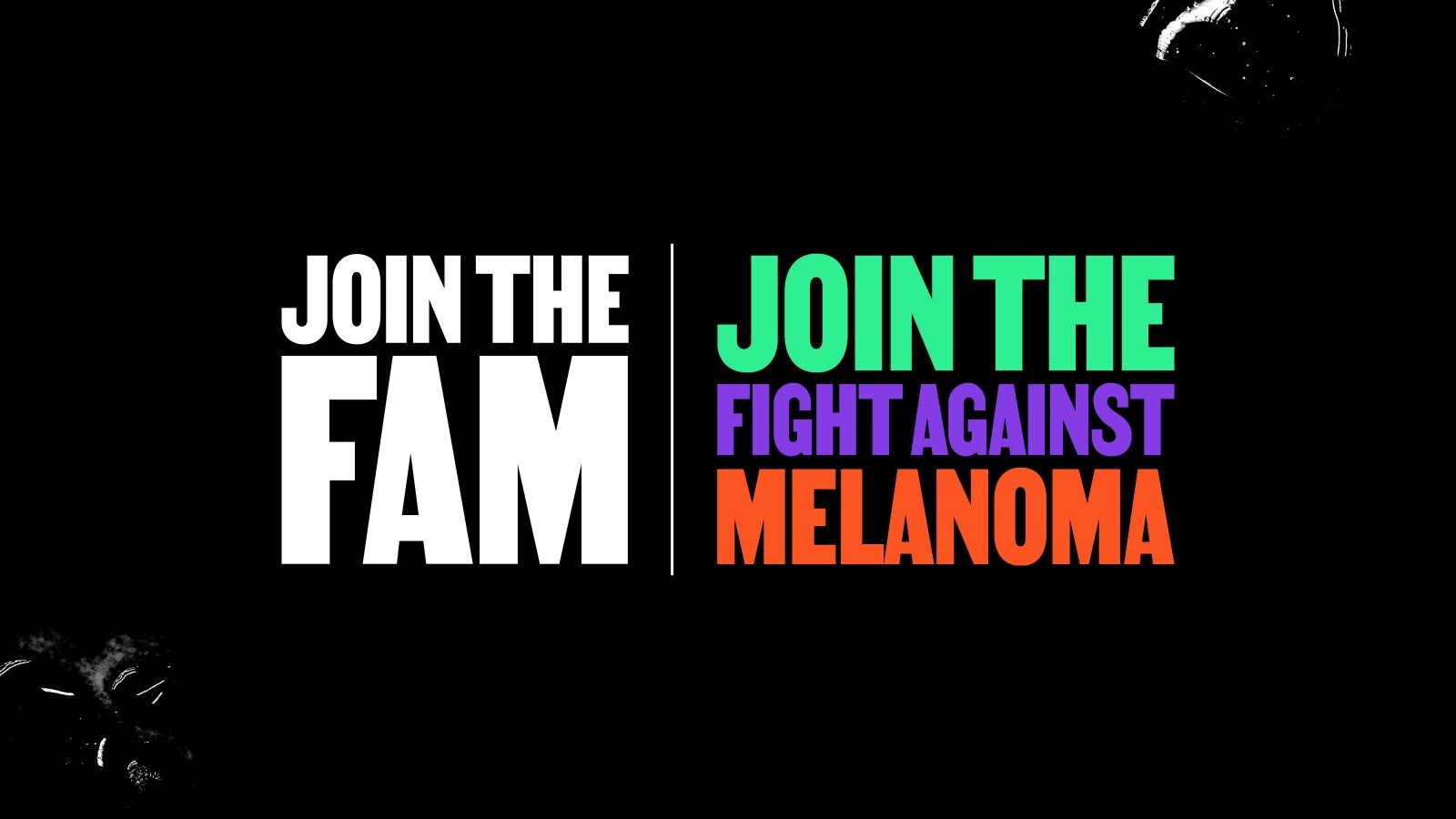
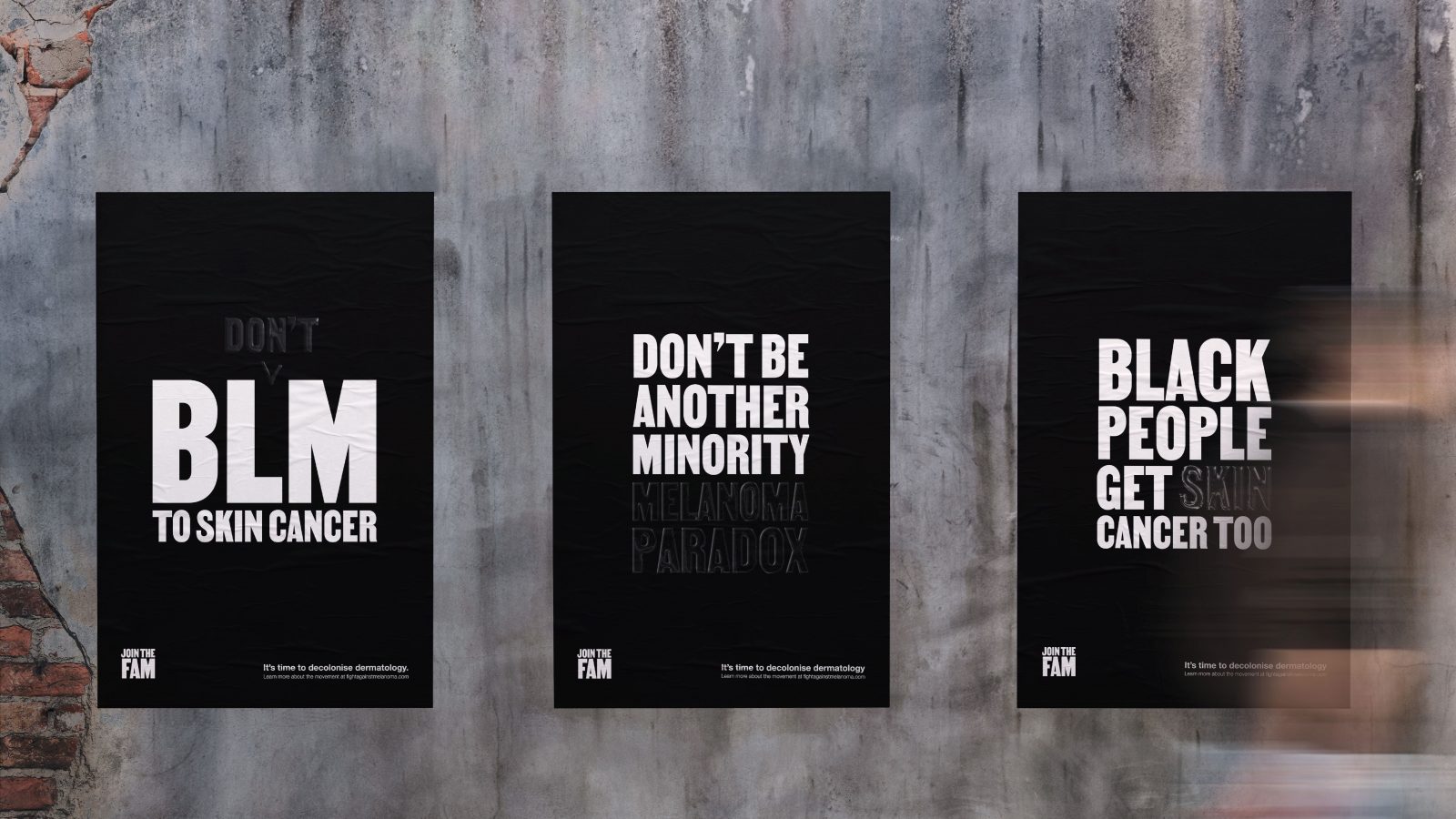
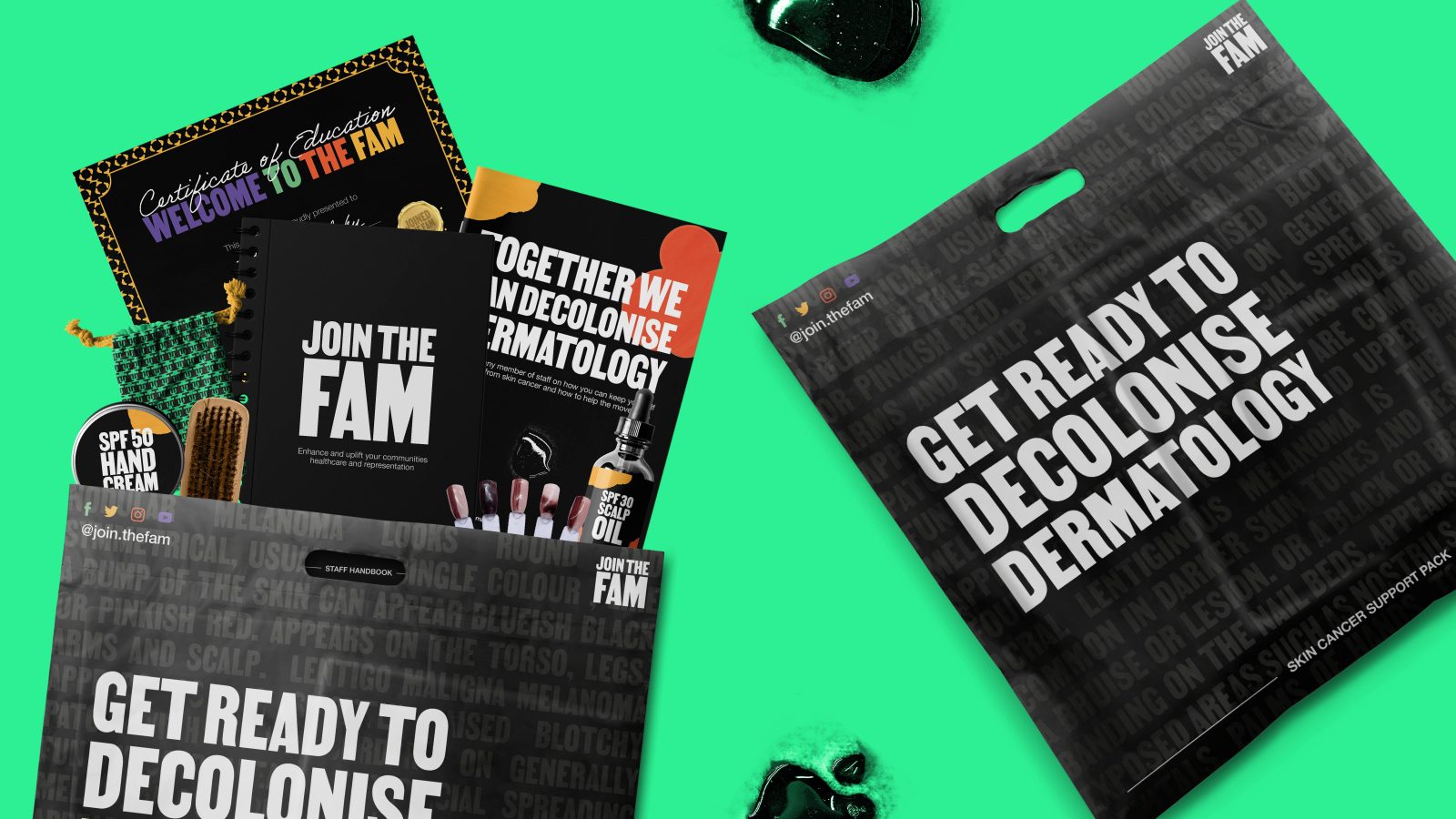
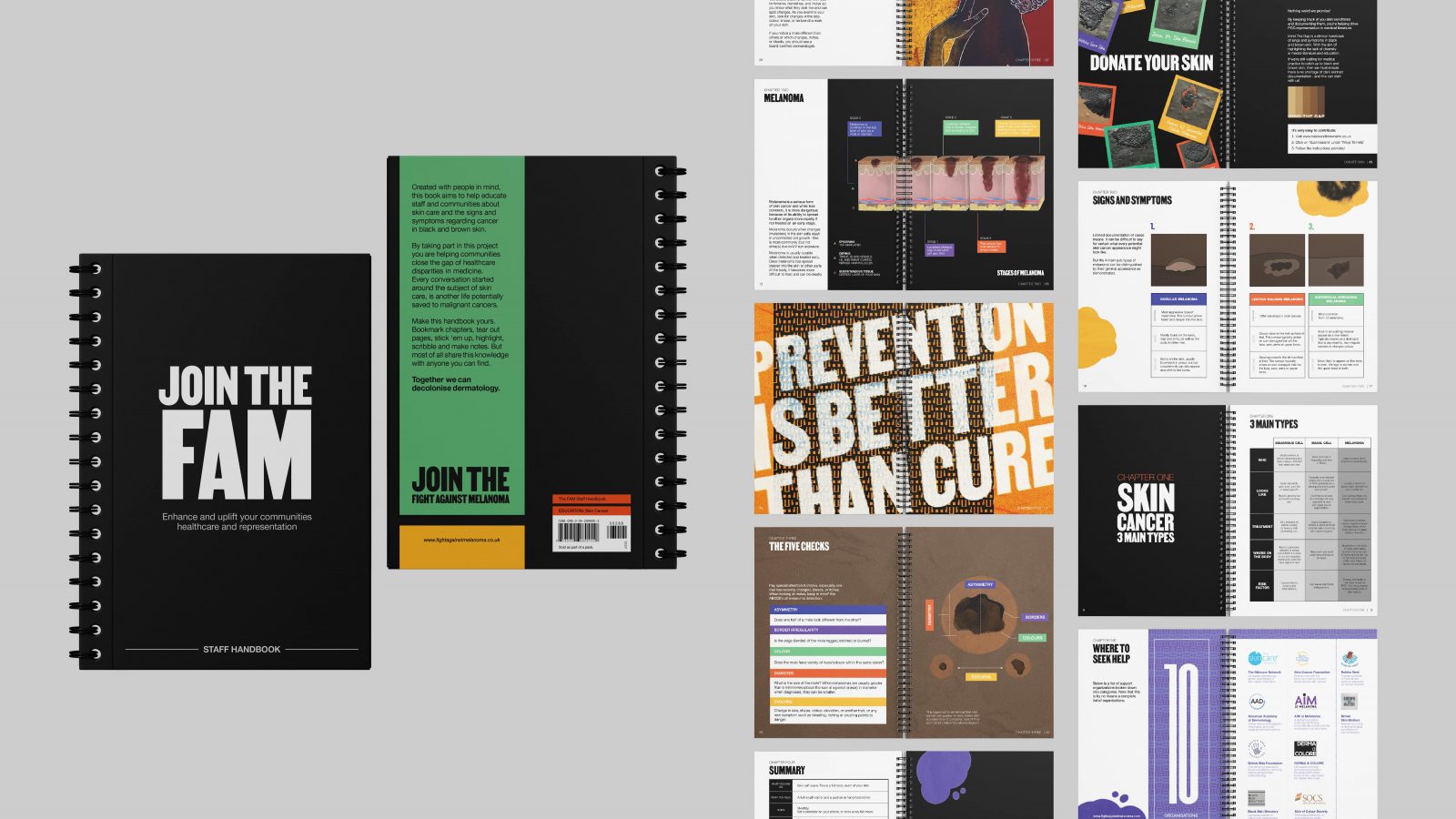
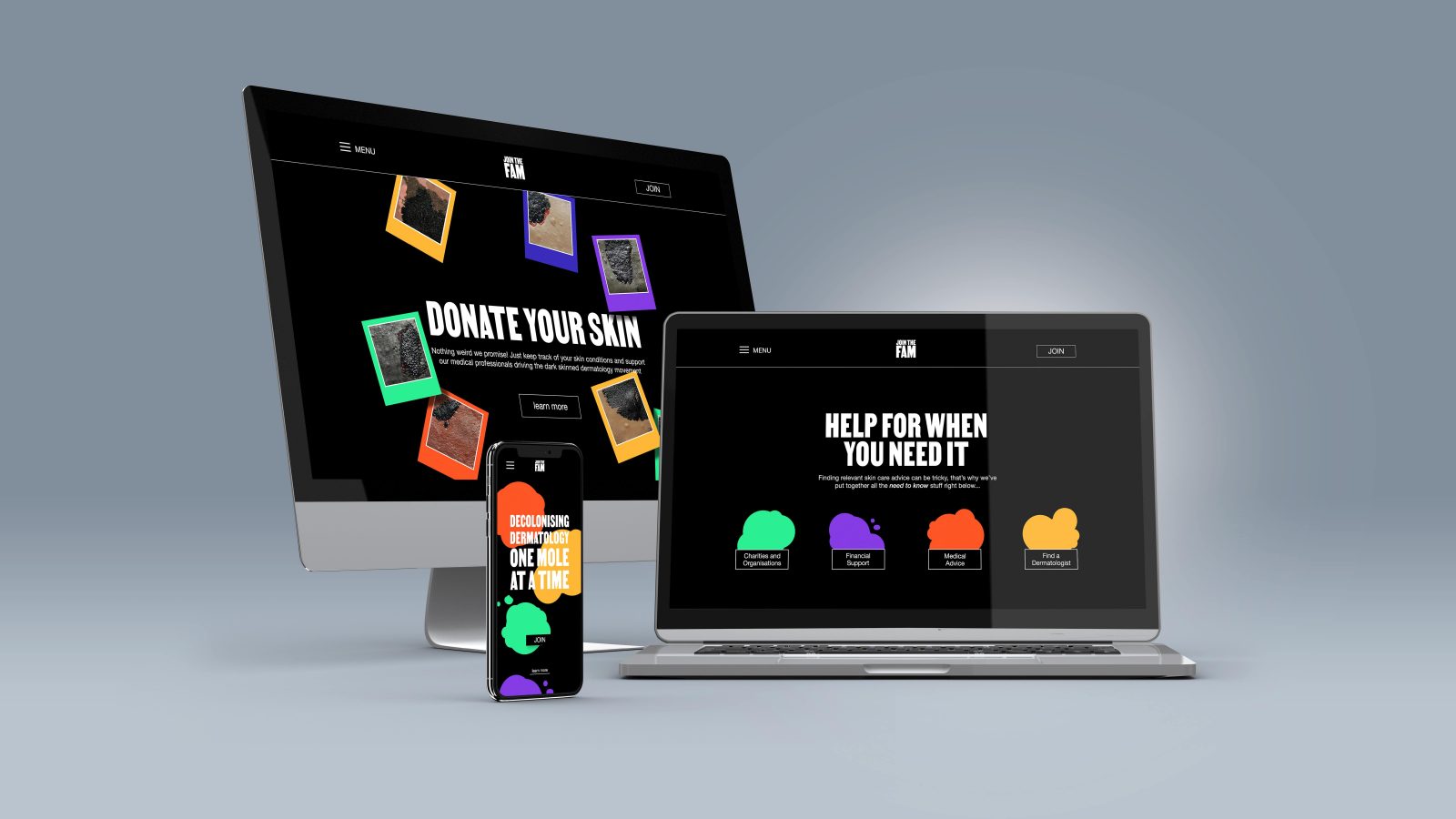
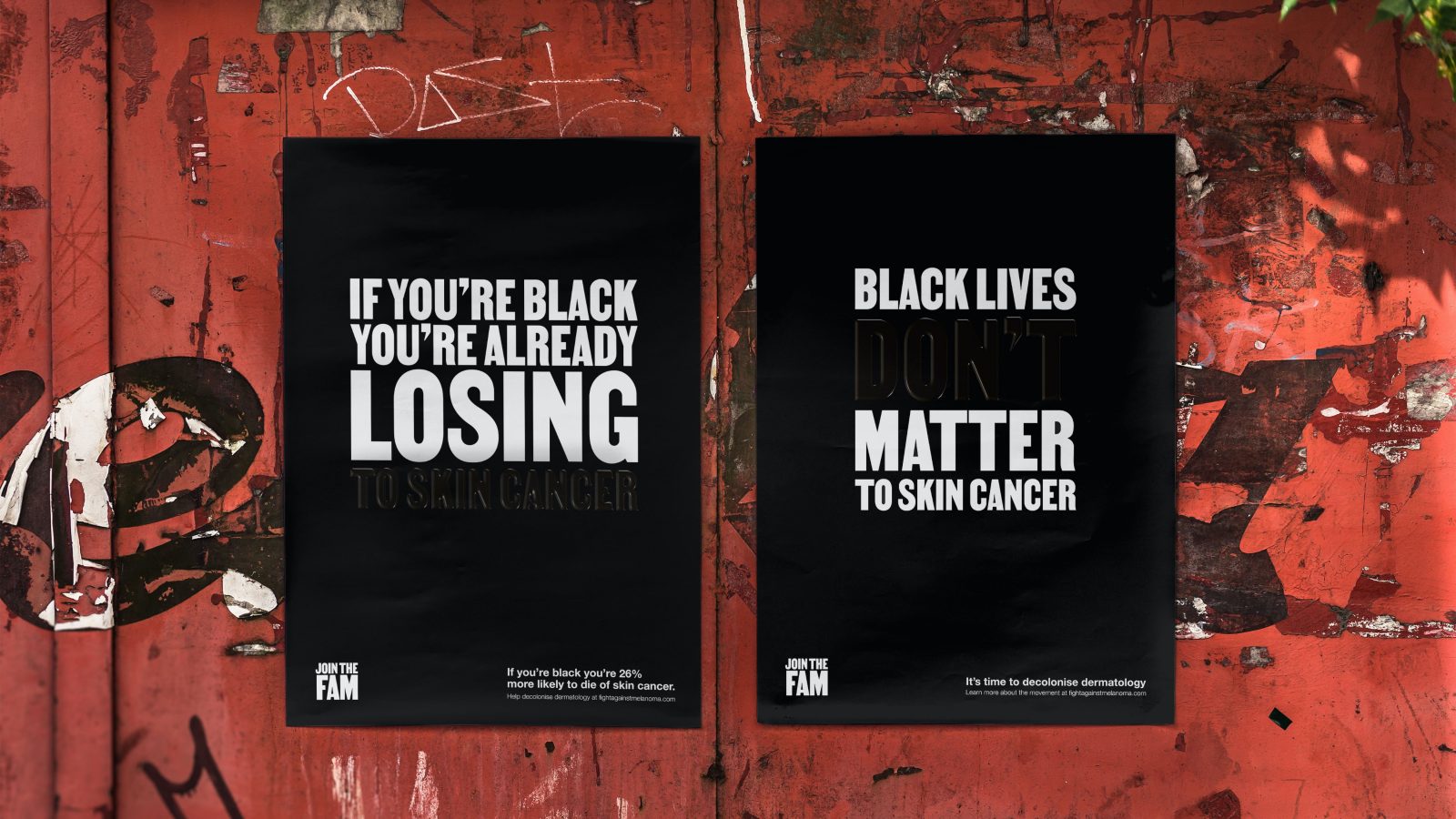
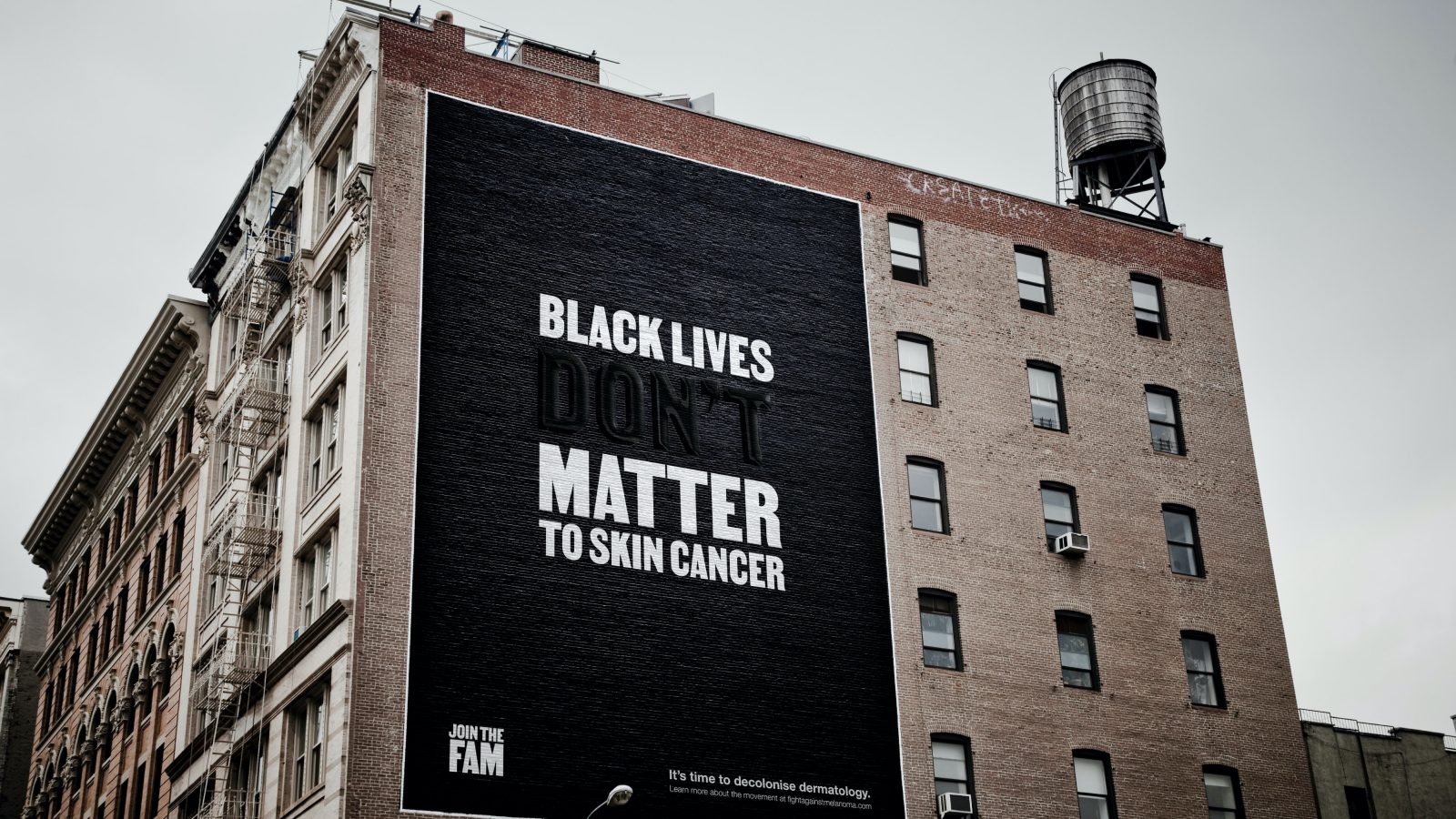
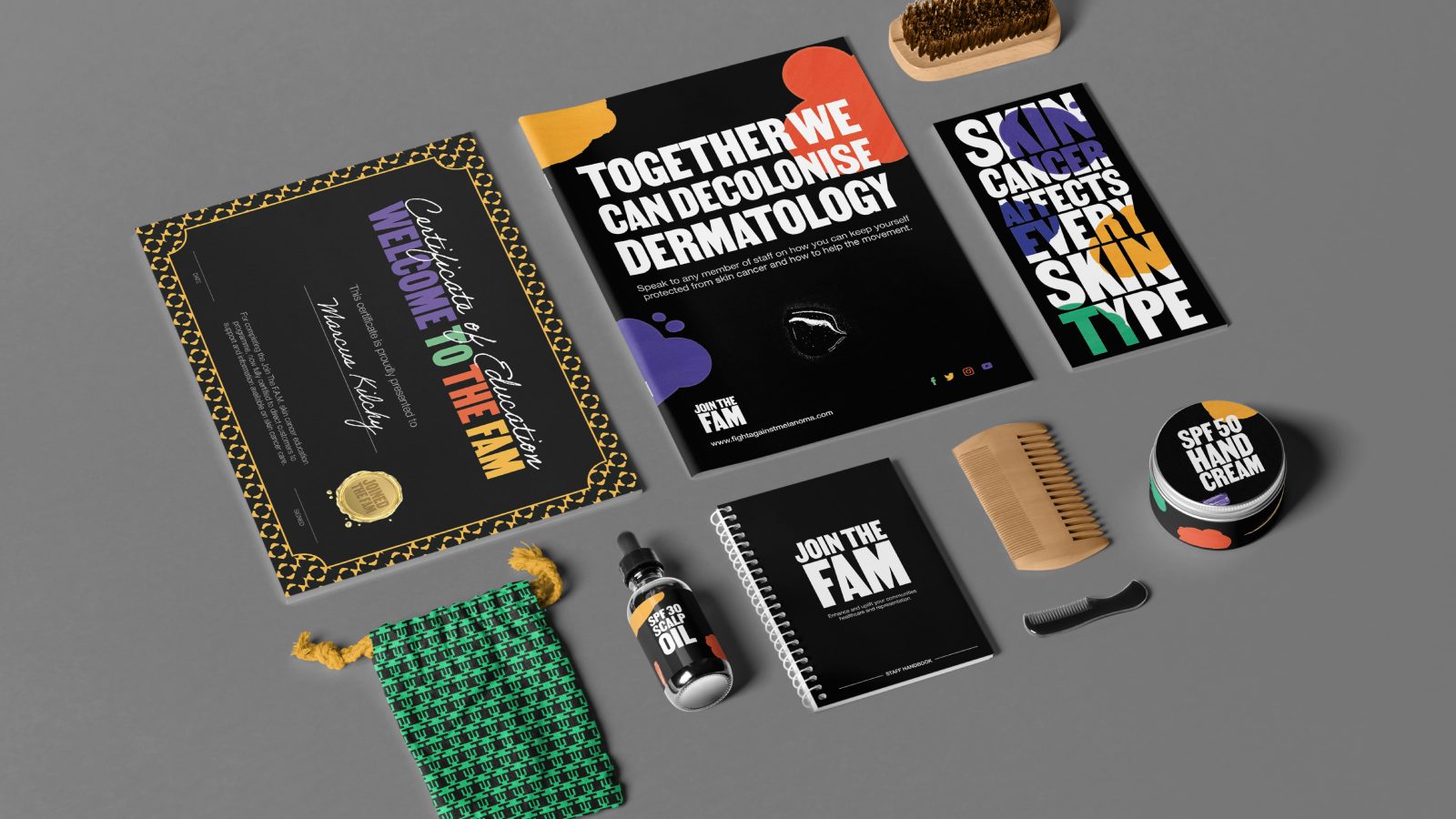
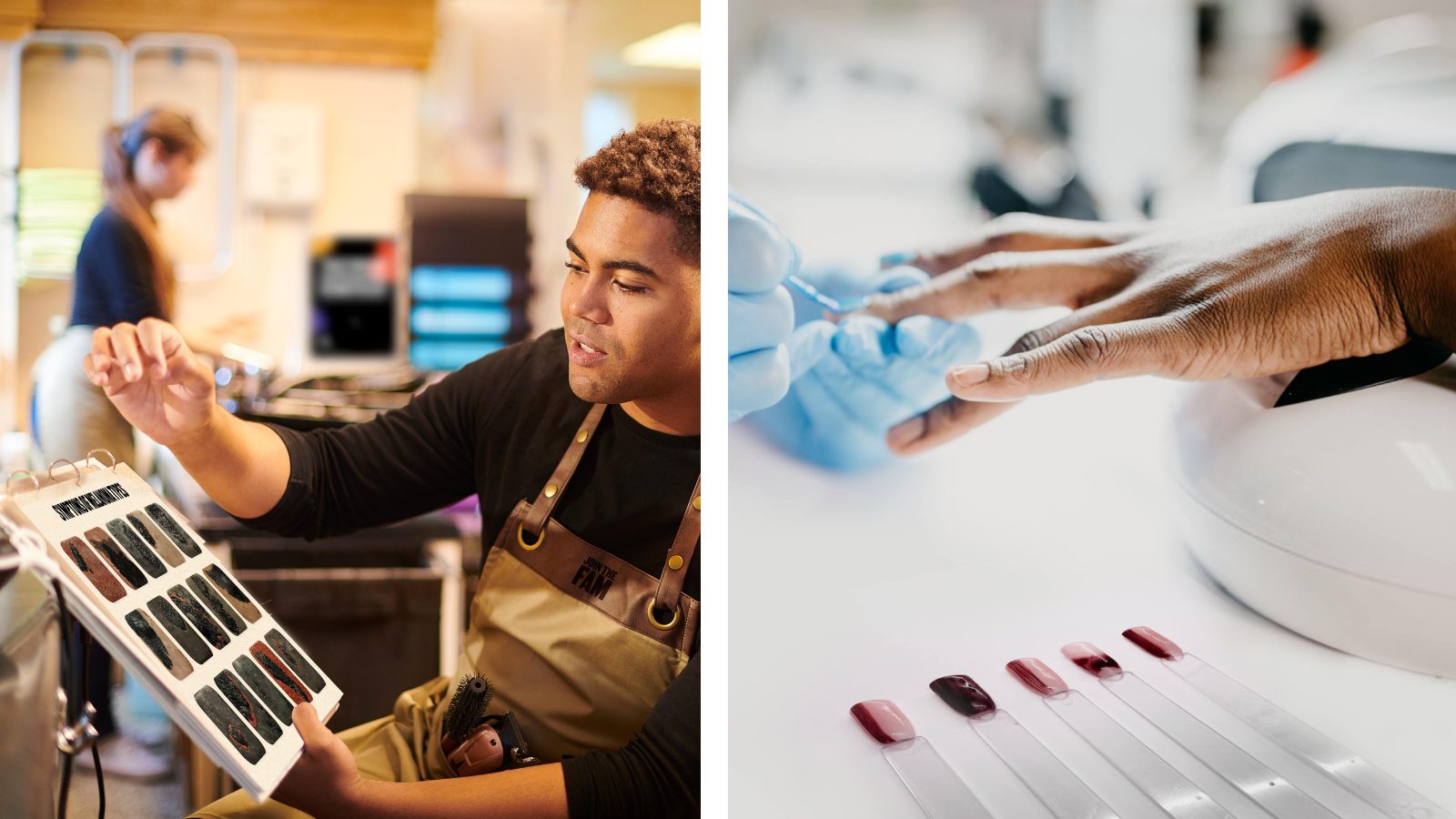
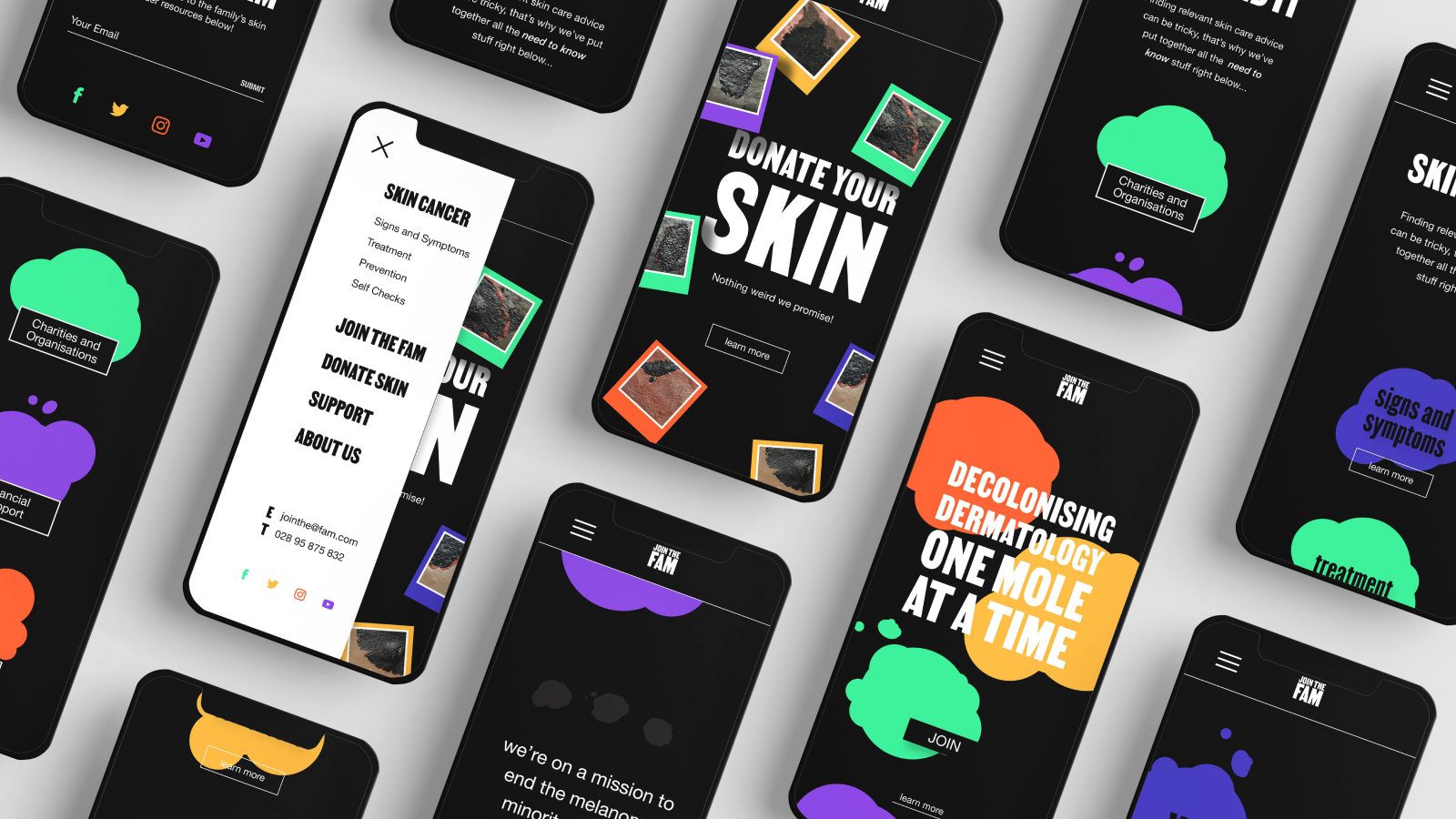
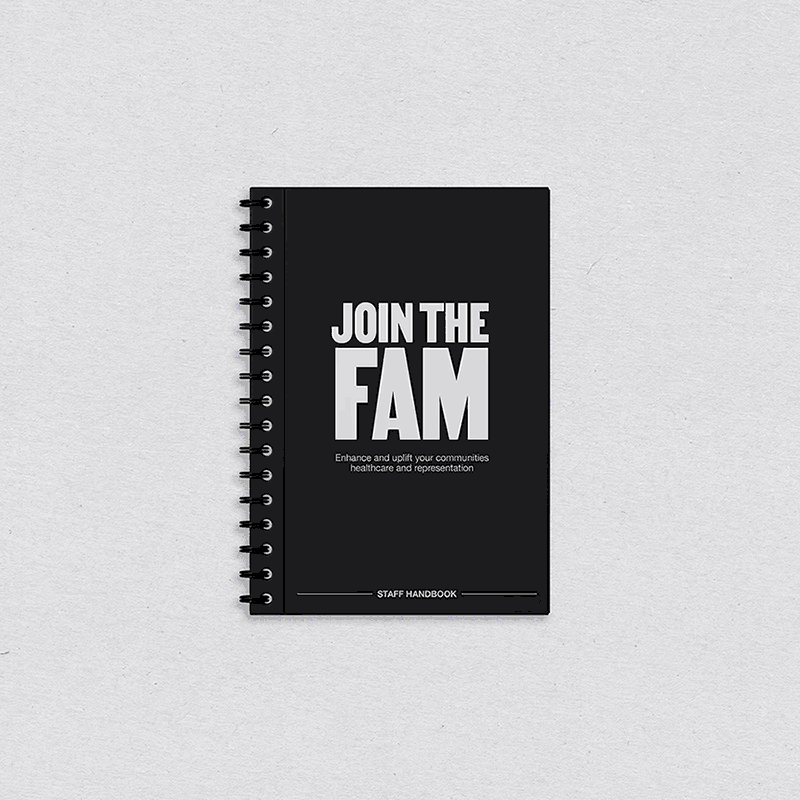
CREDIT
- Agency/Creative: Emily Osborne
- Article Title: Skin Cancer Awareness Campaign by Student Emily Osborne
- Organisation/Entity: Student
- Project Type: Campaign
- Project Status: Non Published
- Agency/Creative Country: United Kingdom
- Agency/Creative City: Belfast
- Market Region: Global
- Project Deliverables: Brand Design
- Industry: Health Care
- Keywords: WBDS Awards Nominee, campaign , student
-
Credits:
Educational Institution Name: Ulster University - Belfast School of Art
Educator's Name: Dr. Brian Dixon












